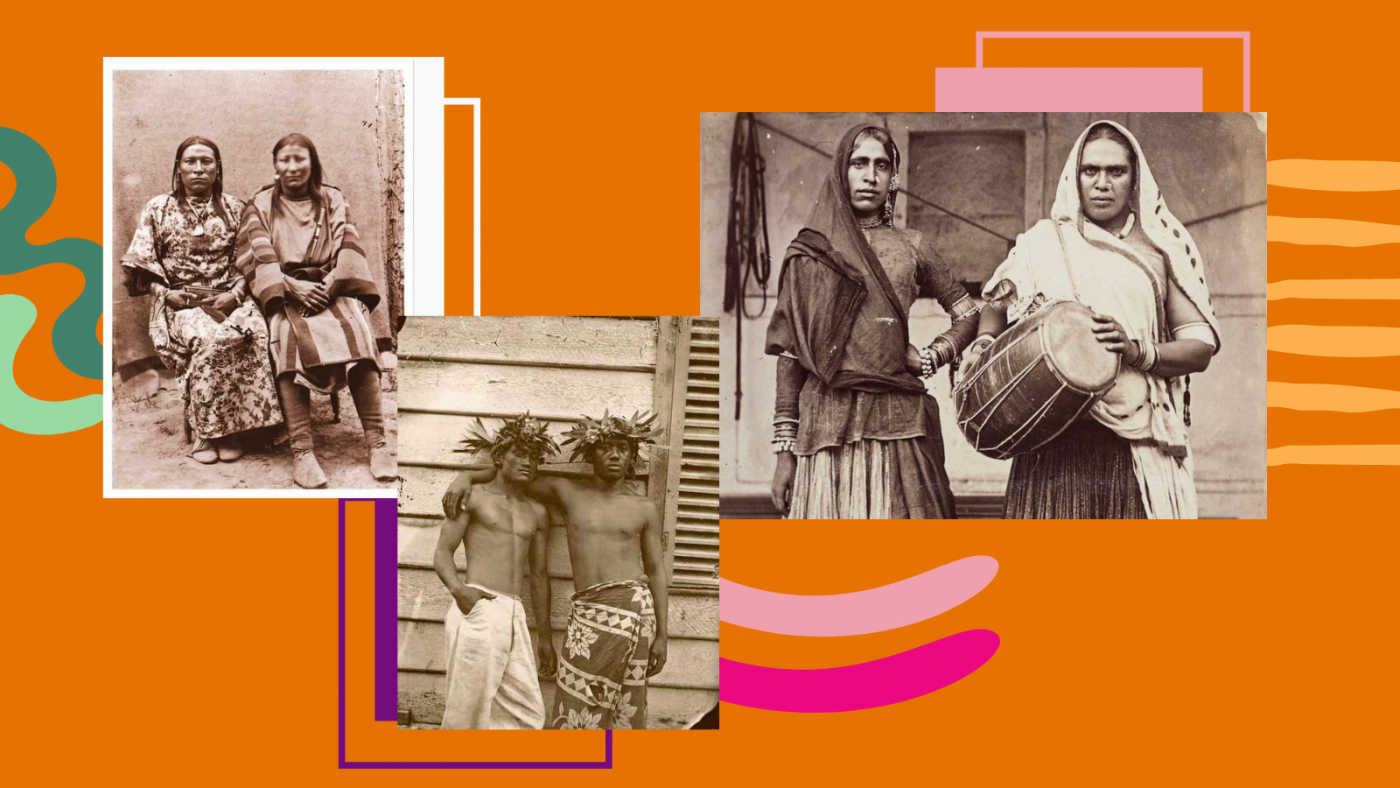LGBTQ+ History Month: A History of the Gender Binary

What is the gender binary and where did it all start? We explore the history of the gender binary and gender fluid communities around the world.
Content warning: colonialism, transphobia, homophobia, mentions of abuse
What is the gender binary?
The gender binary is a system which enforces the belief there are only two genders - men and women.
Under its constraints, it instils the idea that assigned sex at birth [ASAB] also defines your gender. We see how this binary impacts us daily - from imposed gender roles, to the denial of trans and intersex people’s rights.
But for centuries, many communities - particularly Indigenous people - have shown how expansive gender really is. Lots of these stories are from pre-colonial times too, which have often been historically undocumented or ignored.
Gender isn’t binary. So, why is our current world designed with a gender binary in place?
Where did the gender binary come from?
Many studies on the gender binary and its origins argue that colonisation introduced harmful gender-based roles and behaviours.
The gender binary didn’t just come from one source. It was a product of European colonialism, from countries like Britain and Portugal, which forced Western ideals onto racialised and Indigenous people.
The impacts of colonisation and the gender binary
Prior to colonisation, lots of women, third gender and fluid people in the Global South were leaders, healers and well respected in their communities. This was shared across different cultures, too.
The enforcing of a two-gender system and various forms of criminalisation (including of same-gender partners) led to continuous abuse and discrimination faced especially by women, queer and gender fluid people.
Dr. Rain Prud’homme-Cranford, an assistant professor of English and International Indigenous Studies, said:
“Many Indigenous societies have a history of gender spectrums but this was obscured and a culture of shame was built up around it. Creating a gender binary allowed for the settler colonial processes wherein Indigenous women were used as a commodity to gain access to land and have been sexualised, raped and exploited.”
Stonewall has written about the link between British colonialism and countries with anti-LGBTQIA+ colonialism laws, explaining that:
“There is a direct correlation between countries which belong to the Commonwealth, and therefore have previously been under British rule, and countries that still have homophobic biphobic and/or transphobic legislature in their constitutions,”
They also added:
“Colonisation and the spread of fundamentalist Christian attitudes from the British meant that much of Africa lost its previous cultural attitude towards sexual orientation and gender identity and were forced to adopt “new” values from British colonisers in the 19th and 20th centuries. ”
Gender nonconforming communities around the world
Despite the attempts to criminalise gender nonconforming communities, the histories of many groups are still being shared.
These are just some of the countless communities that don’t prescribe to the gender binary
Note: terminology like ‘gender nonconforming’ is a Western concept, so we have ensured to refer to the communities individually spoken about with appropriate terminology.
Two-spirit
Two-spirit is an umbrella term for Indigenous North American people who are a third gender or other fluid expression. There is a deep spirituality with being two-spirit, a feeling that’s shared across this list and other cultures.
Human rights Indigenous activist Albert McLeod said: “A lot of people assume it is particularly about gender identity or biological sex. But myself, I think it’s a more deeper meaning to it in terms of spiritual connection to the land, and to our peoples.”
There are different terms for two-spirit depending on the tribe, according to them. More than 150 Native American tribes recognise third genders. And like many other gender fluid and nonconforming communities, two-spirit communities took on roles of counsellors and healers.
Hijras
Hijras, described as a third gender, have a “recorded history of over 4,000 years,” in South Asia, appearing in holy texts. They are seen as holy people with the ability to perform blessings and curses.
“While hijras are often invited to perform these rituals, they will also attend births and marriages unannounced, claiming their right to attend as their sacred religious duty. Fearful of receiving a curse from hijras, Hindu families often welcome them in and pay them for their services, even when uninvited.”
During colonial rule, they were targeted by laws that directly affected their healthcare and income.
Now, hijras are officially recognised as a third gender in India, Bangladesh and Pakistan. But they still face discrimination - from lack of job opportunities, to threats of violence.
Dagaaba
Before colonialism, “the Dagaaba tribe of Ghana, Burkina Faso, and the Ivory Coast, gender identity was determined differently.”
It’s described as being based on energy - and not dependent on your sex.
“In that context, one who is physically male can vibrate female energy, and vice versa”, Shanna Collins writes in an article exploring gender nonconformity in African states.
māhū
māhū in Native Hawaiian and Tahitian cultures are third gender - “between male and female, or gender fluid. “
In a precolonial era, they were greatly respected amongst their communities, as priests and healers.
Teacher, activist and filmmaker Hinaleimoana Wong-Kalu said: “To be māhū is greater than the gender binary—male, female, those are ordinary people. I can see the world from two different sides, I can do things from two different sides.
A generation of people are fighting back from transphobia and homophobia they’ve experienced, reclaiming the word and identity of being māhū.
Want to learn more about LGBTQIA+ history?
- Dive into our LGBTQ+ History Month resource pack
- Read about how the UK Government blocking Scotland’s Gender Reform Act will impact trans communities and people seeking asylum
We also have LGBTQIA+ resources and organisations you can read out to for support on our community page.
This piece was written by Spark & Co.'s Digital Marketing and Website Support Lead, Cherokee Seebalack (They/Them).